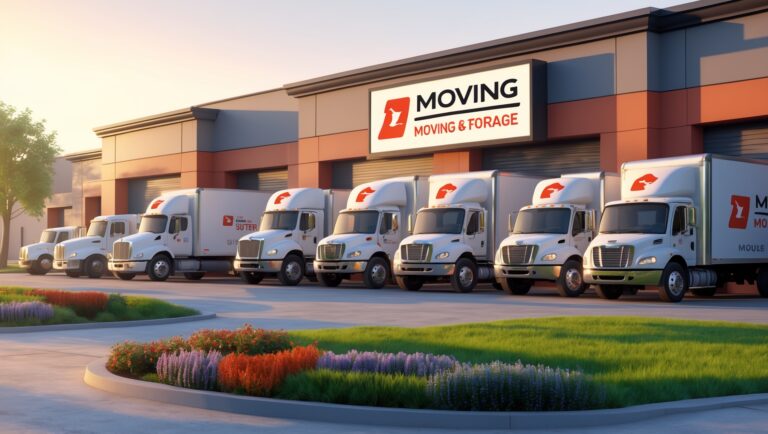Moving Company Safety Checklist: Preventing Injuries Before They Happen
Introduction: Why a Moving Company Safety Checklist Matters
Moving is a physically demanding industry where a single misstep can result in costly injuries, property damage, or reputational harm. Every year, thousands of moving company employees are sidelined by strains, slips, and preventable accidents. For business owners and managers, the stakes are high: not only are you responsible for the safety of your crew, but accidents also translate into insurance claims, lost workdays, and potential lawsuits. Safety is not just about compliance—it’s about building a culture where every move is efficient, professional, and incident-free.
This comprehensive moving company safety checklist is designed to help you prevent injuries before they happen. It covers practical protocols for lifting, loading, equipment use, and situational awareness, and is structured for easy training and daily use. By implementing these best practices, you can safeguard your crew, protect clients’ belongings, and run a more reliable, profitable business.
Pre-Move Preparation: Setting the Stage for Safety
1. Crew Briefing and Health Checks
- Conduct a daily safety briefing: Review the day’s jobs, highlight known hazards (stairs, heavy items, tight spaces), and assign roles.
- Check in on crew health: Ensure no one is working with recent injuries, illness, or under the influence of medication that could impair judgment.
2. Personal Protective Equipment (PPE) Inventory
- Inspect gloves, steel-toed boots, back braces, and high-visibility vests.
- Ensure each crew member has properly fitting PPE and knows how to use it.
- Replace worn or damaged safety gear immediately.
3. Equipment Safety Inspection
- Examine dollies, hand trucks, straps, ramps, and lift gates for damage or wear.
- Test brakes, wheels, and locking mechanisms for smooth operation.
- Sanitize shared equipment to prevent cross-contamination.
4. Vehicle Pre-Trip Checklist
- Inspect tires, brakes, mirrors, and lights.
- Check for loose items in the cab and cargo area.
- Ensure the vehicle has a stocked first aid kit, fire extinguisher, and emergency triangles.
On-Site Safety: Navigating Homes and Worksites
1. Walkthrough and Hazard Assessment
- Walk the property with the client to identify hazards: uneven steps, slippery floors, low ceilings, or pets.
- Clear walkways of clutter before moving begins.
- Mark low-hanging fixtures and other obstacles with brightly colored tape.
2. Safe Lifting Techniques
- Lift with your legs, not your back: bend at the knees, keep the load close, and avoid twisting.
- Use two-person lifts for heavy or awkward items.
- Communicate clearly: use agreed-upon signals or commands when lifting as a team.
- Take mini-breaks to reduce fatigue and muscle strain.
3. Equipment Use Protocols
- Secure items on dollies with straps before moving.
- Always push hand trucks, never pull.
- Position ramps securely; check for shifting or slipping before use.
- Do not overload lifting equipment—follow manufacturer weight limits.
4. Stairs, Elevators, and Tight Spaces
- Assign a spotter at the base and top of the stairs for large items.
- Take only one step at a time; avoid rushing.
- Use corner protectors to prevent wall damage and accidental slips.
- When using elevators, check for weight limits and keep doors clear at all times.
5. Weather-Related Precautions
- Wear appropriate footwear for rain, snow, or icy conditions.
- Lay down non-slip mats at entrances and exits.
- Wipe down wet or muddy equipment before loading into the truck.
- Hydrate frequently in hot weather and schedule rest breaks.
Loading and Unloading: Preventing Vehicle-Related Injuries
1. Loading Dock and Truck Safety
- Ensure the truck is parked on a level surface with the brake engaged.
- Use wheel chocks to prevent accidental rolling.
- Secure ramps and check for stability before use.
2. Safe Loading Practices
- Distribute weight evenly to prevent shifting during transit.
- Stack heavier items at the bottom, lighter items on top.
- Use straps and load bars to secure cargo tightly.
- Never climb on stacked items—use a step stool or ladder as needed.
3. Team Communication
- Assign a spotter during loading and unloading to guide drivers and movers.
- Use radios or hand signals in noisy or crowded environments.
- Stop work immediately if a hazard is detected; regroup and reassess.
On-the-Road Safety: Protecting Crews During Transit
1. Defensive Driving Practices
- Obey all speed limits and traffic laws—no exceptions for tight schedules.
- Maintain safe following distances, especially in adverse weather.
- Use a spotter when backing up large vehicles.
- Never use mobile phones or eat while driving.
2. Emergency Preparedness
- Train drivers on accident response: who to call, what to document, and how to secure the scene.
- Keep emergency contact numbers and insurance information in the glove compartment.
- Ensure all crew members know the location of the first aid kit and how to use it.
3. Fatigue and Break Management
- Plan routes with scheduled rest breaks.
- Rotate drivers on long hauls to prevent fatigue-related accidents.
- Encourage open communication—crew should report if they feel tired or unwell.
Job Completion: Final Safety Steps
1. Post-Move Injury Check-In
- Ask each crew member if they experienced any pain, strain, or minor injuries during the job.
- Document all incidents, however minor, for future training and prevention.
2. Equipment and Vehicle Inspection
- Inspect all equipment for damage sustained during the move.
- Clean and sanitize tools and PPE before storage.
- Check the truck for left-behind items and damage.
3. Client Walkthrough and Sign-off
- Walk the property with the client to confirm no damage or missed items.
- Discuss any challenges or hazards encountered for transparency.
- Collect client feedback on crew professionalism and safety practices.
Training and Continuous Improvement
1. Ongoing Safety Training
- Hold monthly safety meetings to review recent incidents and update protocols.
- Incorporate scenario-based training (e.g., handling a dropped item, responding to injuries).
- Invite external trainers for specialized topics like hazardous material handling or CPR.
2. Safety Culture and Incentives
- Reward crews for incident-free months with bonuses or recognition.
- Display safety metrics in the office to encourage accountability.
- Empower all employees to report hazards or suggest improvements without fear of reprisal.
3. Recordkeeping and Compliance
- Maintain detailed records of all training sessions, injuries, and equipment inspections.
- Stay current with OSHA and DOT requirements for the moving industry.
- Regularly audit safety protocols to close gaps and update documentation.
Conclusion: Making Safety Your Competitive Advantage
Safety in the moving industry is not a box to check—it’s a commitment that pays dividends in every aspect of your operation. By implementing a robust safety checklist, you not only protect your crew from injuries but also reduce downtime, lower insurance costs, and build trust with your clients. Clients notice when a team is organized, communicates well, and handles their belongings with care. This reputation for professionalism sets you apart in a competitive market.
Remember, safety is a continuous process: today’s incident-free move is tomorrow’s best practice. Make it easy for your crews to speak up about hazards, invest in quality equipment and ongoing training, and treat every job as an opportunity to reinforce a culture of caution and care. In doing so, you’ll not only prevent injuries before they happen—you’ll position your moving company as a leader that values its people, its clients, and the future of the business.
Adopt this safety checklist as a living document, update it as you grow, and let your commitment to safety drive your success. Every injury prevented is a win—for your crew, your company, and the families you serve.






